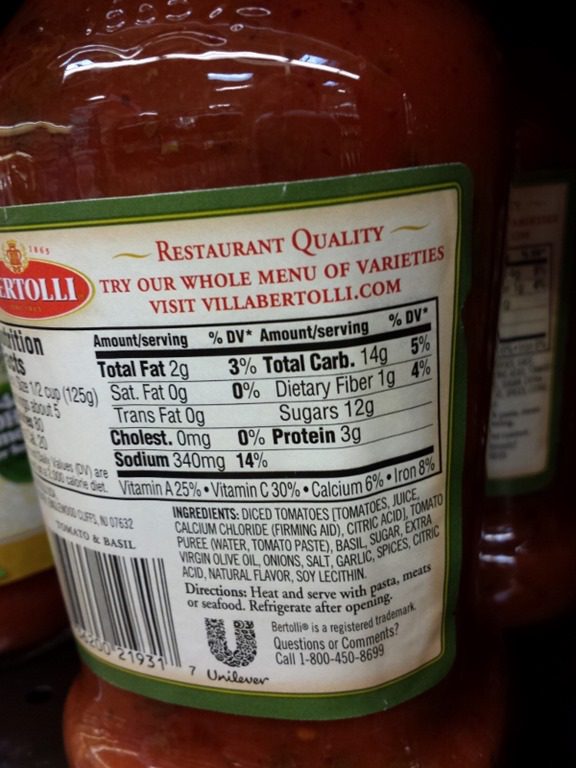38 how to read food labels australia
How to read a label | NSW Food Authority How to read a label Nearly every food product requires a label with specific information that tells us what's in it, how to handle it, and where it has come from, to help us make healthy and safe food choices. See Labels & the law for a list of everything that should be included on a food label. Ingredients & Nutrition Reading food labels to avoid food allergies and intolerances In Australia, many allergens must be declared on food labels regardless of the amount present. This includes ingredients that may be classed as processing aids e.g. flour used to coat moulds. Allergens that must be declared by law are milk, egg, soy, wheat, fish, seafood, tree nut and peanut. A variety of terms can be used to identify ...
Food labelling | Health and wellbeing | Queensland Government Label Buster is a step-by-step guide to help you to create a food label or a product sheet for your food. Start Label Buster How to read a food label Information about each section of a food label, including ingredients, allergens, dates and nutrition information panel. Read more Specific label requirements Bread and bakery products Fermented foods

How to read food labels australia
PDF how to understand food labels - Eat For Health Instead learn a few simple label reading tips to choose healthy foods and drinks, for yourself. You can also use the label to help you lose weight by limiting foods that are high in energy per serve. 100g Column and Serving Size If comparing nutrients in similar food products use the per 100g column. How to read a food label - Healthy Kids Choosing foods in the supermarket can be difficult, so here's a handy guide to help you make decisions. Food labels: How to read and decipher the fine print - ABC News 3. General identifying information. Labels must show the name of the food, the business address and the batch or lot identification of the food. The regulator is specific here. This yoghurt would ...
How to read food labels australia. PDF Reading food labels - Queensland Health Reading food labels . Understanding how to read food labels can help you make healthy food choices. Food Standards Australia and New Zealand (FSANZ) regulates food labelling in Australia. Most packaged food and drink must have a nutrition information panel. Exceptions include those in very small packages, some baked products and take-away food ... How to Read Food Labels & Understand Nutrition Info Panel | Better ... Nutrition Australia states that 460-920g daily value of sodium is adequate for our health. That equates to 1.15-2.3g of salt per day. Excess salt consumption raises your blood pressure and hypertension is associated with a higher risk of stroke and heart disease. Keeping your intake to 4g of sodium per day or less is key. Understanding Food Labels | WW Australia - Weight Watchers It's okay to eat the product after this date, but some of the quality of the food may be reduced. Foods that should not be consumed after a certain date for health and safety reasons, such as meat and dairy, must carry a 'use-by' date. You shouldn't eat any food that is past its 'use-by' date. Some foods such as bread carry a 'baked on ... Understanding food labels: How to read Australian nutritional panels Under FSANZ rules, these labels must reveal how much of the following is in the product: Energy (in kilojoules or both kilojoules and calories) Protein Fat Saturated fat Carbohydrates Sugars Sodium (salt) These contents must show average amount per 100g (or 100ml for liquids) and per serving. A breakdown of what's on nutrition labels
How to Read Food Nutrition Labels | nib Energy. Let's start at the top of the label with 'energy'. Usually measured in kilojoules, it's the total amount of energy you'll consume from the food or drink. Energy is a combination of fats, protein and carbohydrates and the more energy you ingest, the more you should aim to burn off (for example, with exercise). Food label reading guide | Nutrition Australia What to look for when reading food and drink labels (per 100g) Health Star Ratings The Health Star Rating is a front of pack labelling scheme which can be used to make healthier food choices at a glance. The rating range is from ½ - 5 stars and the more stars, the healthier the choice. Recommended minimum star ratings for food and drink categories How to read food labels in Australia: Find nasties and real nutritional ... My advice for reading food labels is to look at the 'per 100g' values, as 'per serve' can often be misleading if you're likely to eat more than the suggested serving size. The 'per 100g' column is also the most useful for comparing products to assess their sugar, protein, sodium and fat content. Understanding food labels fact sheet - NDSS Food labels will typically include a nutrition information panel, list of ingredients, the 'use by' or 'best before' date and identify potential food allergens and additives. Food labels also tell you the amount of carbohydrates (carbs) you eat and drink. This can help you manage your blood glucose levels.
How to read food labels | New Idea Magazine Here are some tips on how to read food and nutritional labels: Nutritional panel Considered the most valuable part of the label, this panel shows the average amount of energy - measured in kilojoules - protein, fat, saturated fat, total carbohydrates, sugars and sodium in a product. Reading food labels - Food Allergy Education How to read food labels that meet the new PEAL law Under the new PEAL law, common food allergens are to be listed with the plain English name alongside the actual ingredient name. This is shown in the label example below. In the statement of ingredients, declarations must: Be in bold font. Have bold font contrasting distinctly with other text. What's on a food label | NSW Food Authority How to read a label What's on a food label What's on a food label Food name The name of a food must be sufficient to indicate its true nature. For example, 'fruit yoghurt' should contain fruit. If it is fruit flavouring, the product should say 'fruit flavoured yoghurt'. For more visit FSANZ. PDF Food label reading guide - Nutrition Australia • Always compare the nutrition information panel (NIP) or health star rating of similar products, for example compare one brand of yoghurt with another brand of yoghurt. • The more stars out of five, the healthier the food or drink choice. Food labels Reading food and drink labels can help us make healthy choices. Food and drink labels will
How to understand food labels - Eat For Health The Nutrition Information Panel on a food label offers the simplest and easiest way to choose foods with less saturated fat, salt (sodium), added sugars and kilojoules, and more fibre. It can also be used to decide how large one serve of a food group choice or discretionary food would be and whether it's worth the kilojoules.
How To Read Food and Beverage Labels | National Institute on Aging At the top of the Nutrition Facts label, you will find the total number of servings in the container and the food or beverage's serving size. The serving size on the label is based on the amount of food that people may typically eat at one time and is not a recommendation of how much to eat. Read more about serving and portion sizes.
How to read the new 'Australian Made' food labels New country of origin food labelling laws come into force in Australia today to clarify where our food comes from. The Australian Made, Australian Grown kangaroo logo will feature on most new labels, along with a bar chart showing what proportion of the ingredients are local. The new system is compulsory for all food produced for sale in Australia.
Labelling poster - how to read food labels This interactive resource explains the food labelling requirements set out in the Food Standards Code and what that information means. Click on the numbers to find out more about food labelling. A useful poster is also available. You can download a copy here (PDF 372KB), or for a printed A2 version please email information@foodstandards.gov.au.
Labelling - Food Standards The Food Standards Code includes the general labelling and information requirements (Chapter 1 of the Code) that are relevant to all foods, and sets out which requirements apply in different situations (for example food for retail sale, food for catering purposes, or an intra-company transfer).
Dairy-Free: How to read food labels - thedietitian If you are dairy free, reading labels is a must. It would be easier if by law Australian companies had to have a clear allergen statement- but this is not the case. ... Dairy-Free: How to read food labels. Updated: Jun 4, 2021. If you are dairy-free, reading labels is a must. It would be easier if by law Australian companies had to have a clear ...
Reading food labels & nutrition panel - Diabetes Queensland Every food label tells a story and the Nutrition Information Panel simply gives you the facts. Ingredients list records all food ingredients and additives in order from greatest to smallest amount by weight. Importantly, the ingredient list must declare if the product contains common allergens such as milk, eggs, nuts and gluten.
Food labels - Better Health Channel The food label will tell you all sorts of information, including: what the food is manufacturer's details nutrition information ingredients weights and measures of product date marking directions for use and storage country of origin allergens and additives any nutrition and health claims.




Post a Comment for "38 how to read food labels australia"